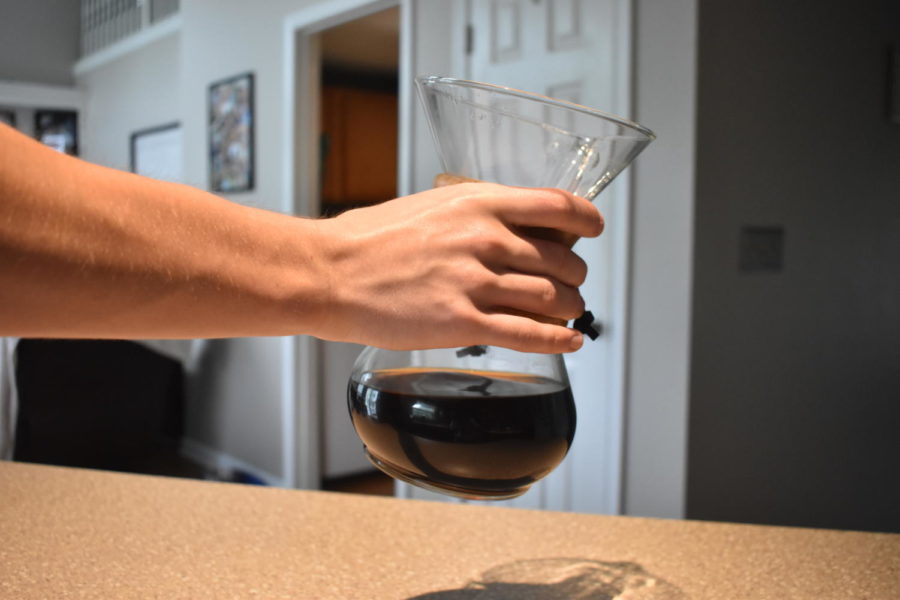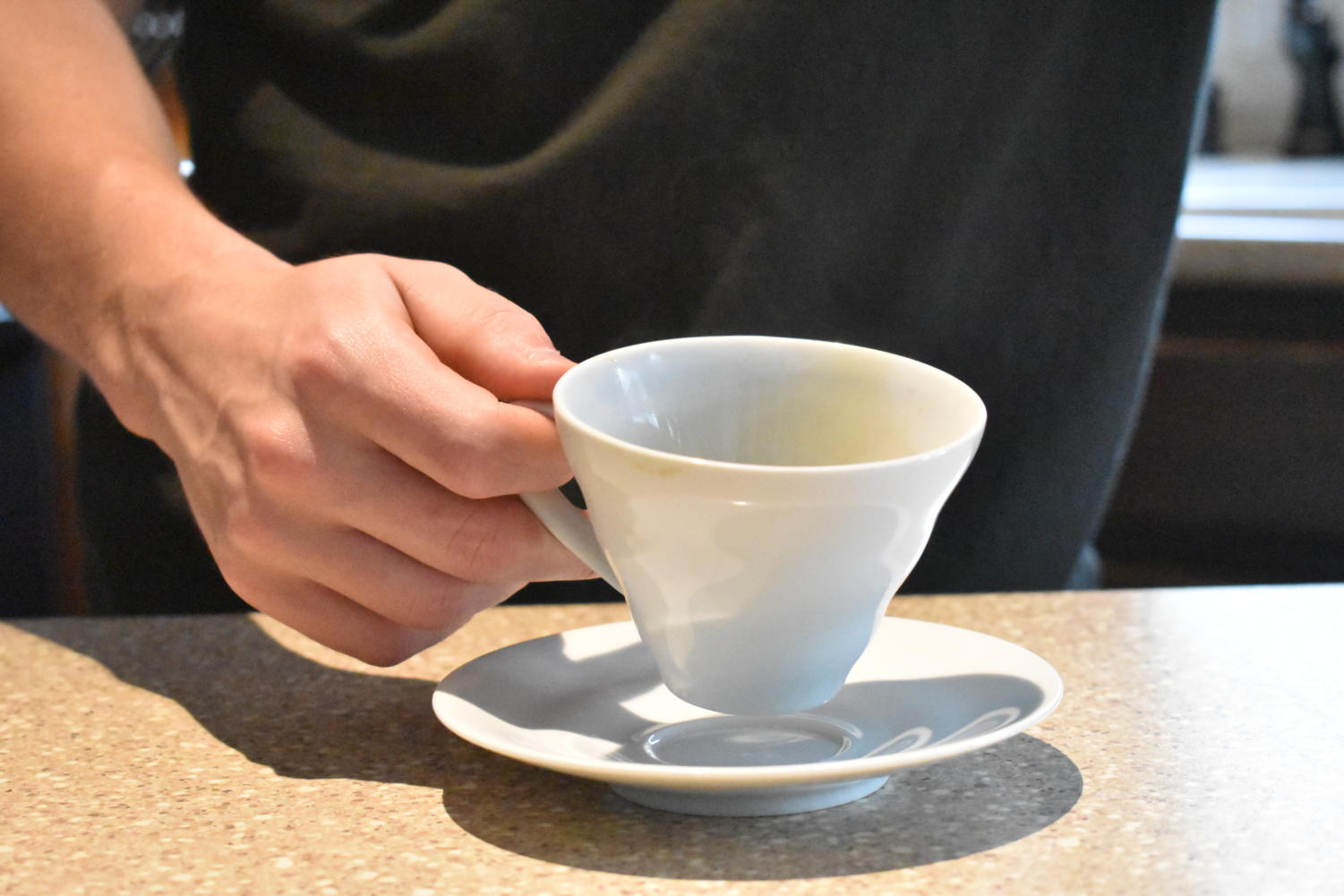Brew Guru
Exploring coffee brew methods
Noah Daniel holding a Chemex
Ethiopians first used coffee as an intrical part of their spiritual ceremonies, beginning centuries ago, according to National Geographic. Originally, they used a simple clay pot. Since then, coffee has become one of the most famous drinks in the world, and a plethora of different brewing methods have been developed. Each brew method has its strengths and shortcomings, depending on what specific flavors are desired.
The oldest brew method on this list is the French Press, created in 1852. The apparatus consists of a cylindrical beaker and a simple plunger-lid. The plunger is a metal screen filter that is used to press the coffee grounds down after brewing is completed. This method takes about 12 minutes from first pour, and it is fully reliant on contact time with the coffee. This is a type of immersion brewing. The French Press is extraordinarily skilled at extracting coffee oils, giving the drink a bolder, more prominent flavor profile, a reason for it being served black. Due to the elongated brew time, the end result may not be as hot as preferred. It, of course, can be reheated, but it’s not ideal. The roast level should be medium-dark to dark for best results. Additionally, look for a low elevation bean to lighten the acidic power.
By far, the most complex method on the list is the Moka Pot. This is a fully-metal appliance that goes directly on the stove. It brews by boiling water pushing through a portafilter-like cup of grounds. The water then emerges from a spout into a cup that sits atop the boiler. One downfall of this method is that it is very hard to master. The steps become very complex when trying to perfect the taste. Otherwise, it is quite a simple way to make coffee. The reverse gravity method produces a beautiful sight, as well as a fantastic cup of coffee. Usually the coffee will be served with milk, due to the potency and low amount of coffee brewed (also known as the yield).
The final and newest of the methods is the renowned Chemex. A hugely successful design, so much so that The Museum of Modern Art displayed the Chemex as one of its “Best-Design” pieces in 1943.
It has an hourglass shape with an open top, a small spout embedded into the wall and a wooden cuff around the thin neck. This is a filter coffee, so it relies on gravity to do the work. This is typically measured atop of a scale in grams as it is being made. The special-made filters are inserted into the open top and water is poured over the coffee grounds in three intervals. The Chemex is undoubtedly a stunning way to view coffee, when the morning sun hits the glass it is truly an experience outside of strictly taste.

Hello, my name is Noah Daniel. I’ll be serving as both the podcast host and Red Onion editor for The Journal this year. I am a senior at SHS, and it...











